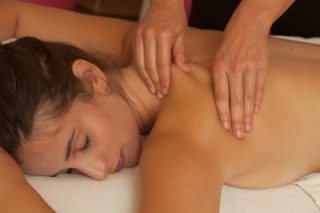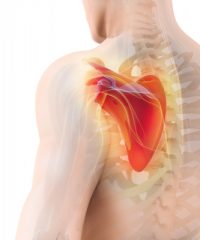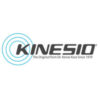Massage & Manual Therapy Techniques
- Swedish Massage
- Neuromuscular Therapy
- Deep Tissue
- Sports Massage
- Cupping Massage
- Pregnancy Massage
- Neural Manipulation
- Active Isolated Stretching
- Kineseo Taping®
- Cold Stone Therapy for Migraines
- Medical or Orthopedic Massage/Insurance Cases
Although Amy has been trained in all of the above techniques, a typical session integrates the best tools for the client’s needs. Neural Manipulation is often practiced as a stand alone technique for 60 or 90 minutes. Active Isolated Stretching can also be performed in individual 30 or 60 minute sessions. The following descriptions will give the lay person a background of the terms.
Swedish Massage is the foundation of every massage, and a very relaxing and therapeutic style of bodywork. It combines oils or lotion with an array of strokes such as long-flowing forearm strokes, rolling, kneading, and percussion to help the body improve its circulation. The benefits of this type of bodywork are wide-ranging and include relief from soreness and chronic pain, decreased stress levels in the body, grounding & balancing, and greater flexibility. Swedish massage can help increase the lymph flow in the body, flushing waste from the tissues and increases surficial blood flow.
Image courtesy of patrisyu at FreeDigitalPhotos.net
If you have never experienced a massage, and/or would just like an extremely relaxing and not-too-deep experience, Swedish is for you. People with certain conditions such as fibromyalgia and chronic fatigue syndrome can benefit greatly from this type of massage.
Neuromuscular therapy is a system of massage techniques that were developed in the 1930’s by Dr. Stanley Lief in England. It uses a holistic approach towards healing, emphasizing and stimulating the body’s natural ability to heal itself. Neuromuscular therapy also enhances the function of joints and muscles, and accelerates the overall healing process by facilitating the release of endorphins.
By definition, Neuromuscular Therapy is the utilization of static pressure on specific myofascial points to relieve pain. This technique manipulates the soft tissue of the body (muscles, tendons and connective tissue) to balance the central nervous system. In a healthy individual, nerves transmit impulses (which are responsible for every movement, function and thought) to the body very slowly. Injury, trauma, postural distortion or stress cause nerves to speed up their transmission, inhibiting equilibrium and making the body vulnerable to pain and dysfunction. It is therefore necessary to stabilize low levels of neurological activity to maintain normal function and overall health.
Neuromuscular Therapy will be used to address five elements that cause pain:
- Ischemia: Lack of blood supply to soft tissues which causes hypersensitivity to touch
- Trigger Points: Highly irritated points in muscles which refer pain to other parts of the body
- Nerve Compression or Entrapment: Pressure on a nerve by soft tissue, cartilage or bone
- Postural Distortion: Imbalance of the muscular system resulting from the movement of the body off the longitudinal and horizontal planes
- Biomechanical Dysfunction: Imbalance of the musculoskeletal system resulting in faulty movement patterns (i.e., poor lifting habits, bad mechanics in a golf swing of tennis stroke, computer keyboarding).
Deep Tissue Massage is a form of bodywork that aims to relieve tension in the deeper layers of tissue in the body. Deep Tissue Massage is a highly effective method for releasing chronic stress areas due to misalignment, repetitive motions, and past lingering injuries. Due to the nature of the deep tissue work, open communication during the session is crucial to make sure you don’t get too uncomfortable.

When there is chronic muscle tension or injury, there are usually adhesions (bands of painful, rigid tissue) in muscles, tendons, and ligaments. Adhesions can block circulation and cause pain, limited movement, and inflammation. Deep tissue massage works by physically breaking down these adhesions to relieve pain and restore normal movement. To do this, the massage therapist uses deep gliding, direct deep pressure (often with the elbow), and transverse or longitudinal friction.
Image courtesy of yodiyim at FreeDigitalPhotos.net
Will Deep Tissue Massage Hurt?
At certain points during the massage, most people find there is usually some discomfort and pain. It is important to tell the massage therapist when things hurt and if any soreness or pain you experience is outside your comfort range. There is usually some stiffness or pain after a deep tissue massage, but it should subside within a day or so. The massage therapist may recommend applying ice to the area after the massage.
Precautions for Deep Tissue Massage
This type of massage is NOT recommended for people with:
- infectious skin disease, rash, or open wounds
- immediately after surgery
- immediately after chemotherapy or radiation, unless recommended by your doctor
- people with osteoporosis
- prone to blood clots. There is a risk of blood clots being dislodged.
- pregnant women
- bruises, inflamed skin, unhealed wounds, tumors, abdominal hernia, or areas of recent fractures.
Cupping Massage is performed using silicone cups to release the fascia and deeper layers of tissue. Cupping has it’s foundation in Chinese medicine and has been performed for thousands of years to release tissue and bring blood to the surface. Amy uses the pliable silicone cups to release the fascia and separate the layers of adhered muscle and connective tissue prior to using her hands for massage. Cups bring blood to the surface and can leave red marks or round circles that resemble bruises. All cups are sterilized with barbicide before use.
Cupping should not be performed on people that are energy depleted or immune compromised, undergoing treatment for serious illness (ie. cancer), on skin conditions, or over areas with herniated discs or spinal hardware.
Pregnancy Massage is specifically for pregnant & post-partum women. Pregnancy is a time when a woman’s body endures tremendous stress due to dramatic physical and emotio nal changes. Using various techniques specially developed for the expecting mother, Pregnancy Massage helps release the pain and discomfort experienced throughout pregnancy. The benefits are profound, including emotional support, the relief of joint pain due to extra weight and postural imbalance, and improved breathing and relaxation.
nal changes. Using various techniques specially developed for the expecting mother, Pregnancy Massage helps release the pain and discomfort experienced throughout pregnancy. The benefits are profound, including emotional support, the relief of joint pain due to extra weight and postural imbalance, and improved breathing and relaxation.
Image courtesy of Jomphong at FreeDigitalPhotos.net
After working with pregnant women for 5 years, Amy felt it was time for some advanced training. She completed Kate Jordan’s Bodywork for the Childbearing Year in October 2003. As a certified pregnancy massage therapist, Amy has increased her knowledge and skills to effectively treat the common muscular dysfunctions of the pregnant woman’s body. Depending on the client’s anatomy and personal requests, pregnancy massage is performed sidelying, semi-reclining with a support wedge, and/or in the Prego Pillow™ which allows the woman to lay face-down. Amy is a member of the Albuquerque Birth Network, and gives presentations on pregnancy massage.
Please inform Amy if your pregnancy is considered “high-risk”, as an approval from your doctor or mid-wife may be necessary prior to your first massage appointment.
Neural Manipulation
Neural Manipulation was created by Jean Pierre Barral and examines mechanical relationships between the cranium/spine hard frame to the dura and neural elements. It provides assessment and treatment approaches to address restrictions of the dural and neural components not commonly focused on with musculoskeletal symptoms. Neural Manipulation identifies and releases local nerve restrictions (buds) while at the same time examines the effect these local fixations have on the rest of the body, and by accessing this relationship, resolves the more comprehensive (global) dysfunctional patterns. This work is very gentle, contacting the nerves directly and following it’s pattern with induction/listening to release buds and tension. Technique can also include working on dural membranes and some cranial bone connections. This technique can be beneficial for tunnel syndromes (carpal tunnel, thoracic outlet), sciatica, stenosis, lower back pain, mechanical nerve compressions, neuropathy, whiplash, morton’s neuroma. Not indicated for metabolic conditions such as neuropathy from diabetes, neuropathy from chemotherapy/radiation, infectious neuropathies, aneurysms, lymphoma, severe arterial hypertension. Please call Amy is you have further questions about Neural Manipulation, at 505-255-2203.
Sports Massage is a type of massage designed for highly active people who engage in all types of athletics. Engaging in sports is harsh on the body and can often lead to injuries in both the short and long term. Sports Massage enhances performance and  prolongs a sports career by helping to prevent injury, reduce pains and swelling in the body, relax the mind, increase flexibility, and dramatically improve recovery rates. Sports Massage is also highly effective in aiding the rapid recovery of an athlete from an injury by encouraging greater kinesthetic awareness and in turn promoting the body’s natural immune function. Sports massage emphasizes prevention and healing of injuries to the muscles and tendons.
prolongs a sports career by helping to prevent injury, reduce pains and swelling in the body, relax the mind, increase flexibility, and dramatically improve recovery rates. Sports Massage is also highly effective in aiding the rapid recovery of an athlete from an injury by encouraging greater kinesthetic awareness and in turn promoting the body’s natural immune function. Sports massage emphasizes prevention and healing of injuries to the muscles and tendons.
My sports massage focuses on two areas:
restorative sports massage – given during training to allow the athlete to train harder and with less injury.
rehabilitative sports massage – aimed at alleviating pain due to injury and returning the body to health.
You don’t have to be a professional to benefit from Sports Massage. Recreational runners, cyclists, triathaletes, skiers, and rock climbers all come to Amy for treatments.
Active Isolated Stretching (AIS) & Strengthening is a very effective technique for stretching the muscles, ligaments and tendons that was developed by Aaron Mattes. Amy has advanced training the the techniques for neck and shoulders, some of the most often injured areas of the body – not just from sports, but from repetitive use injuries. AIS is typically performed sitting in a chair before the massage therapy session. A few of the stretches can be done on the massage table. The client is instructed to actively move or engage a certain muscle to their end range. Then the therapist will continue the stretch of that tissue for 2 seconds. The stretch is then repeated 8-10 times. Studies have shown that this type of stretching is extremely effective for injury rehabilitation and flexibility. Amy can also instruct the client on the proper self stretches to be done at home.
Kineseo Taping® is a therapeutic taping technique which alleviates pain  and facilitates lymphatic drainage by microscopically lifting the skin. It’s a great adjunct to massage therapy, as it acts as fingers to therapeutically continue the benefits. Read more about Kineseo Taping®, developed by Dr. Kenzo Case in Albuquerque over 40 years ago.
and facilitates lymphatic drainage by microscopically lifting the skin. It’s a great adjunct to massage therapy, as it acts as fingers to therapeutically continue the benefits. Read more about Kineseo Taping®, developed by Dr. Kenzo Case in Albuquerque over 40 years ago.
Cold Stone Therapy for Migraines was developed by Kelly Lott of Migraine Miracle.
What is a Migraine Headache?
If you are a migraine sufferer, you know it. Each year, approximately 50 million people in the U.S. suffer from them. A migraine is a severe, painful headache that is often preceded or accompanied by sensory warning signs such as flashes of light, blind spots, tingling in the arms and legs, nausea, vomiting, and increased sensitivity to light and sound. The excruciating pain that migraines bring can last for hours or even days. Several of my friends get these headaches, and it is a debilitating problem that causes the loss of work, time with family and being able to function normally. The actual cause of migraines is not known; however, we do know what can trigger a migraine.
Here are some of the most common triggers:
• Stress and anxiety
• Caffeine addiction
• Hormonal changes
• Food allergies
• Environmental agitation
Migraine sufferers are all too familiar with early symptoms and warming signs (aka “prodrome”) that one is about to strike. For optimal results, this is exactly when they should receive the treatment. During a migraine, blood vessels in the brain expand in a process called vasodilation. As the tissues surrounding the brain swell, pain intensifies. Medications only help half of migraine sufferers half the time. And the side effects of taking prescription migraine medications can include a rebound headache, ulcers, stroke, heart attack, muscle weakness, dizziness, and nausea.
Benefits of a Cold Stone Therapy Session
Many health professionals advise cold therapy to reduce the pain and occurrence of migraines. Studies show that cold therapy alone helps to eliminate or reduce migraine pain 50% of the time. Now, sufferers can be helped even more with the additional of aromatherapy and muscular tension relief that this treatment offers.
The cold stone migraine therapy helps the blood vessels to constrict, relaxes the muscles around it, and brings the congested blood in the head down to the feet. It is best to get a session at the very beginning of a headache – prodrome (also called pre-headache). This treatment can also helpful at any stage – depending on the client’s symptoms. This therapy is excellent as a preventative measure for migraines (and regular headaches) that originate from muscle tension and/or stress.
Massage is becoming increasingly recommended by doctors to help migraine sufferers. There are 4 parts to the migraine therapy, which involves cold therapy to the head, massage, aromatherapy, and heat therapy to the feet.
Experiencing a Cold Stone Session
The session begins with heat therapy on the feet. Based on whether one’s headache is caused by the environment, stress, or foods, an organic aromatherapy oil blend is selected and applied, Specialized massage therapy/myofascial release is performed to relax the muscles that may have tensed up due to pain. Cold marble stones designed specifically for the face are carefully placed on the face and occiput.
From feedback from my clients, I can say that the therapy will leave one feeling very relaxed and somewhat invigorated. The pain will most likely be gone or greatly reduced by the end of the session. In some instances, it may happen more gradual but within 24 hours one should notice a positive effect from the session.
There are many triggers to migraines and some may need to take prescription medications at times. However, one can try to avoid what triggers a migraine, practice good self-care, and receive alternative healing therapies such as the cold stone migraine therapy. Here’s another good article on migraines and natural treatment.
Orthopedic Massage (aka Medical Massage)
Orthopedic massage focuses on assessment prior to treatment. Amy has studied with Whitney Lowe to develop assessment skills. While it is not within a massage therapists scope of practice to diagnose, the assessment can give some indication of the tissues involved, whether it be muscle, tendon, ligament, fascia or other connective tissue. The assessment may also indicate a nerve entrapment, or joint involvement. This type of massage is very specific, detailed, and tailored to the injured or dysfunction areas of the body only. Techniques can include friction, stripping, broadening, pin and stretch, Myofascial, positional release, and trigger point therapy. This type of treatment of often used post surgery or post joint replacement.
Insurance Cases
Heartline Massage Therapy accepts personal injury and worker’s compensation cases in the State of New Mexico. In the event of an injury sustained in a car accident, your car insurance should pay for massage therapy as long as you have “medpay” on your plan. For an injury that has occurred on the job, the State worker’s compensation should pay for therapy. Amy will file the insurance paperwork for reimbursement, so there is no out of pocket expense for your treatments. Typically, you will come for treatments at least once a week until significant improvement is seen in your pain and range of motion is improved. A prescription for massage is necessary.
Massage for personal injury cases will be tailored to the injured tissue, as diagnosed by your physician, chiropractor, or doctor of oriental medicine. Amy will use orthopedic massage techniques (sometimes called medical massage) to treat the injured areas.
Amy is an out-of-network provider for health insurance and cannot file health insurance at this time. Please check with your specific health insurance provider for benefits. Ask if massage therapy provided by a licensed massage therapist is a covered benefit, and if they have a list of therapists in their network.
Call Amy at 505.255.2203 for questions or more information.
Back To Top

